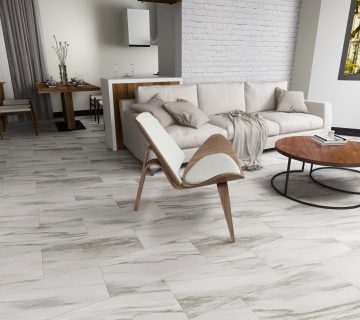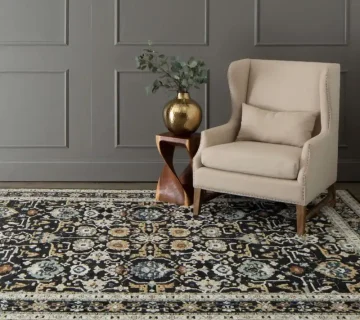Vinyl tile is an easy and affordable DIY project that can see you enjoying your new vinyl floors in less than 48h. Self-adhesive vinyl tiles make a great choice for flooring on your kitchen, bathroom or any room, mimicking the look of ceramic and stone tiles but at a much lower cost. Applying self-adhesive vinyl tile is easy, and requires no specialist knowledge besides a bit of familiarity with other DIY projects.
Preparation
To install self-adhesive vinyl flooring you will need a surface that is flat, dry and clean. They can be installed over concrete but you may need to use a self-leveling floor filler to ensure the subfloor is totally flat. If you are installing over wood or old, undamaged vinyl, sand away any uneven surfaces and fill in cracks or low spots with a suitable material. Clean the floor in-depth, removing all dirt and grease or remains of adhesive with suitable products, and wait until it’s perfectly dry. Some people choose to hire heaters to dry the room thoroughly if it’s not a well-ventilated area of the house.
While doing this, leave the new self-adhesive vinyl tiles inside the house, so the glue sets to the environment it will be installed on.
Measurements
To ensure a professional looking installation, you will want to start laying vinyl tile from the centre of the room and not from a wall. The easiest way of finding the centre of the room is to draw a chalk line between the middle points of each of the two pairs of opposing walls. In order to make installation look perfect you want to make sure there’s more than half a tile left on the tile that is going to be touching the all.
If you plan on using differently coloured tiles to create a unique pattern, you should consider laying them down now without removing the paper from the back of the tiles. This will allow you to perfect your design, and you can use the chalk stick to raw guide lines.
Installing Self-Adhesive Vinyl Tile
Once your guide lines are set, you can start installing vinyl tiles. Peel the paper backing from a self-stick vinyl tile, place it in the centre starting point and press it into place. Lay the next tile right next to the tile edge of the already installed one, and keep doing this until the row is finished. If you need to cut a tile to fit against the wall, you can use a utility knife to cut it. Once all the room is covered in tiles, a rolling pin can be used to ensure the tile is evenly glued to the underfloor.



